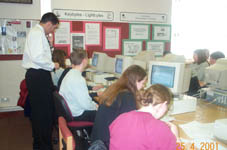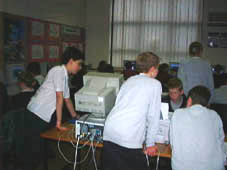What is the impact of multisource learning on History at Key Stage 3?
Lloyd Brown and Rolf Purvis: Chesterton Community College


Download report (37.8K)
Summary
This small-scale case study examined how the use of multisource learning - using a wide range of resources including electronic ones - could help develop the teaching and learning of History at Key Stage 3. The approach employed was based on the premise that key elements of children's historical understanding and enquiry could be enhanced through a multisource approach. The study examined the use of this approach through project work on the First World War, carried out over 20 lessons with two parallel, high achieving Year 9 groups. The Internet was used alongside other resources and a Smart Board offered opportunities for teacher and pupils to share work. Methods of data collection included pupil interviews, questionnaires at the start and end of the project, discussions with pupils during lessons, and more formal interviews carried out by the partner teacher. Notes from independent observations and transcripts of follow-up teacher interviews were also drawn upon. The main findings of the study were that multisource learning, especially through the use of ICT, makes a wider range of high quality resources more readily available (and at lower cost since historical artifacts are difficult and expensive to obtain). It can encourage pupils to become autonomous learners as well as collaborative partners, thus leading to a higher level of analysis than one would normally expect. There are more opportunities for pupils to communicate their ideas creatively and to apply ICT skills in a meaningful way. The project further enabled pupils to explore, discover and incorporate evidence more easily into their work, including original art work, posters and written sources to

